In Pictures: A History Of Computer RPGs
30+ Years Of Computer RPGs
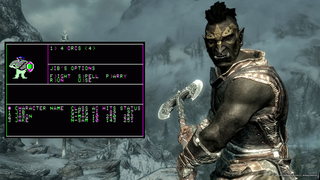
Computer role-playing games have been with us for almost as long as computers themselves. Today, we take a look at their history to see how they have progressed from the very first examples more than thirty years ago to the modern games we play today. On the left, we find ourselves in the exact same situation in 1981 (Wizardry: Proving Grounds of the Mad Overlord) and 2011 (The Elder Scrolls V: Skyrim): being attacked by an Orc!
We have tried to include games that made a big contribution to the development of the genre. Sadly, our original list included more than 30 games, so we had to make some hard choices, and not everybody's favorite will be on the list. This should not keep you from reminiscing about all the games you have spent many hours of your life on in the comments, though!
Pictures courtesy of MobyGames.com and Bethesda Softworks.
Ultima I: The First Age Of Darkness
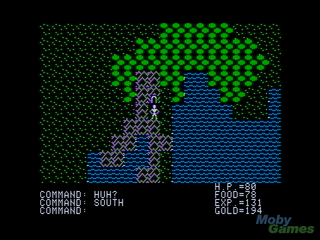
Year: 1980
Publisher: California Pacific Computer Co. (developed by Richard Garriott, a.k.a. Lord British)
Original platform: Apple II
Even before Ultima I, there were games like Akalabeth: World of Doom and Dunjonquest: Temple of Apshai. For many people, though, Ultima I marks the starting point of the genre, probably due to its wide availability and being the first in the Ultima series, which is still seen by many as the most genre-defining computer role-playing series, bar none. The Ultima series had a total of nine installments (one more of which is in this story), the spin-off Ultima Underworld (also in this story), and, finally, Ultima Online, the first major MMORPG (which is not in this story since we are not covering MMORPGs). For the time, Ultima I had revolutionary graphics, as it was the first game to use tiles. It featured a large game world, with players ending up all the way in outer space.
Stay On the Cutting Edge: Get the Tom's Hardware Newsletter
Get Tom's Hardware's best news and in-depth reviews, straight to your inbox.
Picture courtesy of MobyGames.com.
Wizardry: Proving Grounds Of The Mad Overlord
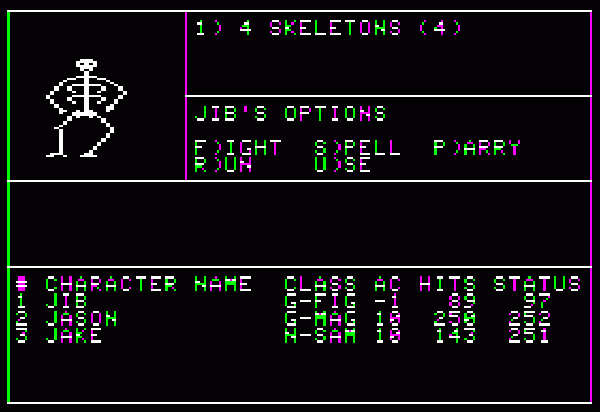
Year: 1981
Publisher: Sir-Tech
Original platform: Apple II
Along with the Ultima series, the Wizardry games helped define the basic interface for role-playing games on the computer. Wizardry also featured a party, rather than a single character (Ultima followed this trend starting with Ultima III: Exodus in 1983). The series went on to include eight installments for the PC in the U.S., plus several console-based Wizardry-branded games, with Wizardry: Labyrinth of Lost Souls being the latest one available in the U.S., and more available in Japan.
Picture courtesy of MobyGames.com.
The Bard's Tale

Year: 1985
Publisher: Electronic Arts (developed by Interplay Productions)
Original platform: Apple II
The Bard’s Tale, or, officially, Tales of the Unknown Vol. 1: The Bard's Tale, featured a good interface and color graphics with some animations. Due to these, as well as the characters’ ability to travel outdoors with the same 3D point of view that they had in the dungeons, and the opportunity to do different things in town, the game was considered to provide a whole new level of immersion. It was the first game in a three-part series. The final game in the series, The Thief of Fate (1991), allowed auto-mapping, which was a controversial feature at the time, since many players thought that it took a lot of the challenge out of the game.
Picture courtesy of MobyGames.com.
Might And Magic Book I: The Secret Of The Inner Sanctum
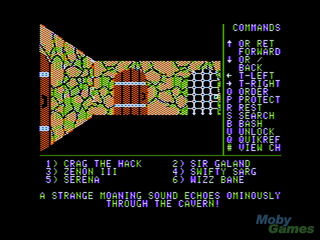
Year: 1986
Publisher: New World Computing (developed by Jon and Michaela Van Caneghem)
Original platform: Apple II
Might and Magic Book I: The Secret of the Inner Sanctum featured characteristics, such as gender, race, and alignment, that had an influence on game play and interaction with non-player characters (NPCs). The Might and Magic series is often considered to have shaped the genre as much as Ultima and Wizardry. The series would go on to have nine installments, and it lives on today through its spin-off series, Heroes of Might and Magic.
Picture courtesy of MobyGames.com.
Pool Of Radiance
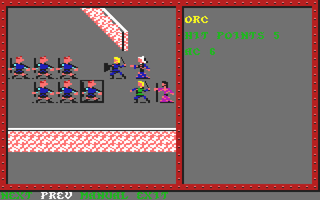
Year: 1988
Publisher: Strategic Simulations, Inc.
Original platform: Commodore 64
Pool of Radiance was the first of the so-called “Gold Box” games (called such due to the golden-colored game boxes). The games brought the Advanced Dungeons & Dragons tabletop role-playing game system, along with the Forgotten Realms setting, to the computer, both of which SSI had officially licensed. The adaptation of the AD&D rules, as well as the advanced graphics, made the game a hit. Including spin-off series, there were more than 10 Gold Box games.
Picture courtesy of MobyGames.com.
Wasteland
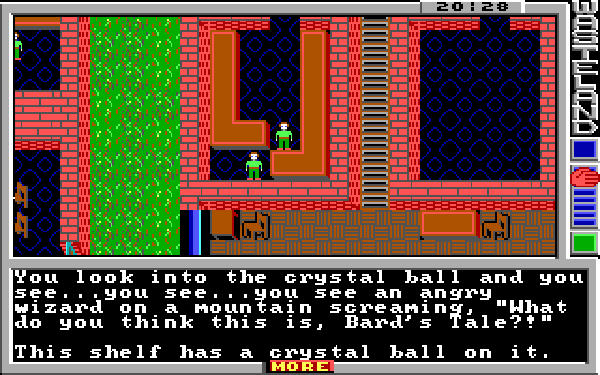
Year: 1988
Publisher: Electronic Arts (developed by Interplay Productions)
Original platform: Commodore 64, Apple II, and MS-DOS
Wasteland did not just feature a very open gaming world that the player could roam freely, but it was also one of the first games to have a persistent game world (changes due to the player’s actions were saved on the game disk and were still present when the player returned later). This made the game feel more “real” to many players. It featured a sci-fi setting, as opposed to the more common fantasy settings of the time. Wasteland was also the "spiritual" precursor to the popular Fallout series, discussed later in this story.
Picture courtesy of MobyGames.com.
Hero’s Quest: So You Want To Be A Hero
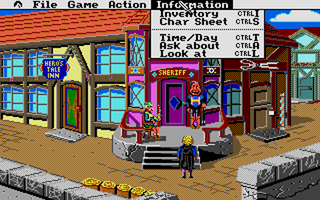
Year: 1989
Publisher: Sierra On-Line
Original platform: MS-DOS
The first Hero’s Quest was a hybrid of computer role-playing games and the traditional graphical adventure games that Sierra was known for at the time. The combination proved to be successful, with the Quest for Glory series spanning a total of five installments. Many other games have successfully used this combination since, including Sierra’s popular Krondor series, the first part of which was published in 1993.
Picture courtesy of MobyGames.com.
Eye Of The Beholder

Year: 1991
Publisher: Strategic Simulations, Inc.
Original platform: MS-DOS
Eye of the Beholder was the first of SSI’s “Black Box” games, the follow-up to the successful “Gold Box” games discussed earlier in this story. Eye of the Beholder still featured the Advanced Dungeons & Dragons rules; however, it was also a real-time game, perfecting the formula introduced earlier by games like Dungeon Master. This, coupled with the (for the time) fluid graphics, made the game a very immersive experience. However, movement was still discrete in that the gaming world still consisted of squares, with the view moving from one square to the next.
Picture courtesy of MobyGames.com.
Ultima VII: The Black Gate

Year: 1992
Publisher: Origin Systems
Original platform: MS-DOS
Ultima VII moved the popular Ultima franchise to real-time game play. It also no longer used the same fully tile-based engine of the previous games, making for much better graphics. Ultima VII built on some of the elements introduced in previous Ultima games (a huge game world) and Ultima VI (highly interactive environments, the ability to do nonessential things, and NPC schedules). The resulting game is considered by many to be the first “world simulator,” providing more immersion than anything before it. It was also one of the first computer RPGs to be fully designed for use with the mouse. The game kept the isometric (top-down view) perspective, unlike Ultima Underworld, which was also published in 1992, and is discussed next.
Picture courtesy of MobyGames.com.
Ultima Underworld: The Stygian Abyss

Year: 1992
Publisher: Origin Systems (developed by Blue Sky Productions)
Original platform: MS-DOS
Ultima Underworld was the first computer role-playing game to let the player move fluidly (not from square to square) around the game world. Whereas Ultima VII provided a new level of immersion due to its world, Ultima Underworld did the same due to its graphics. Many players will never forget the first time they started the game and were able to move around “just like in the real world.” Story-wise, the game was not part of the Ultima series, but presented a stand-alone adventure by the same protagonist (the “Avatar”), set in the same world. It had one sequel, Ultima Underworld II: Labyrinth of Worlds, released in 1993.
Picture courtesy of MobyGames.com.
-
godfather666 Nice, never played any of the games before Dragon Age. might check out Baldur's Gate enhanced edition.Reply -
bystander nk102Quite a jump there...Baldur’s Gate to Dragon Age: Origins?I was about to write the same thing.Reply -
yialanliu How do we jump from 1998 to 2009? There were definitely games taht were good in that time period...Reply -
agnickolov Huge gap from 1998 to 2009... I'd put Diablo II on its own in that timeframe, but that might be just me... It was significantly more advanced in game play compared to Diablo and in fact most other action RPGs to stand alone on a hilltop... Even the new Diablo 3 yet to be released seems to pale compared to it (at least according to impressions from the Diablo 3 Beta).Reply -
killerclick No Morrowind, no Oblivion, no KOTOR, no NWN, no Mass Effect... no Might and Magic? Stupid list.Reply
Most Popular






